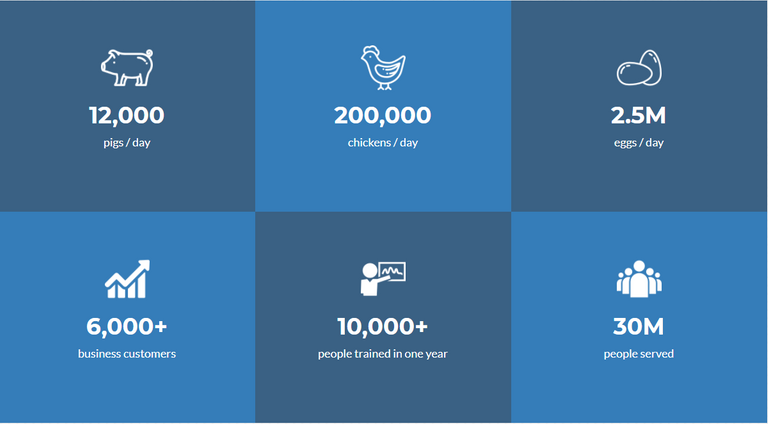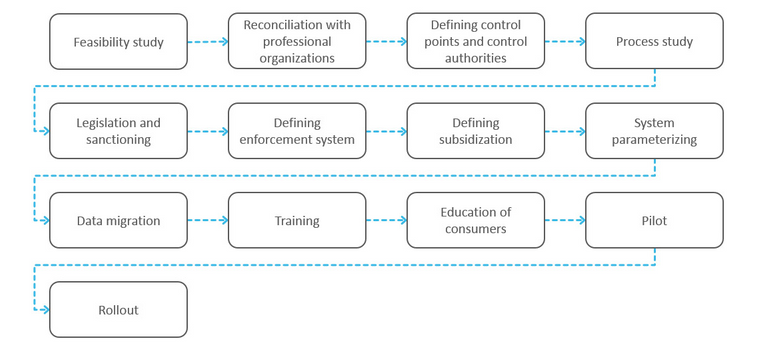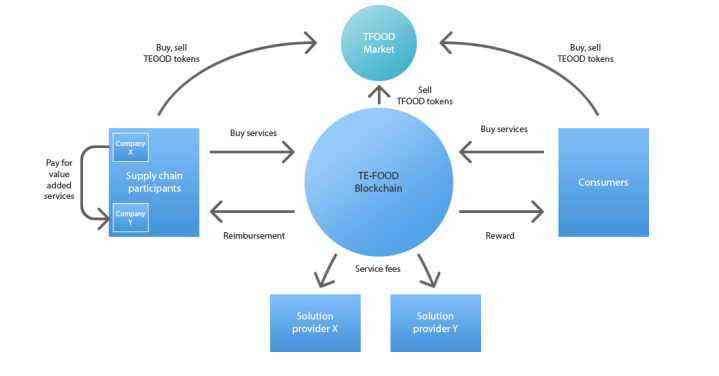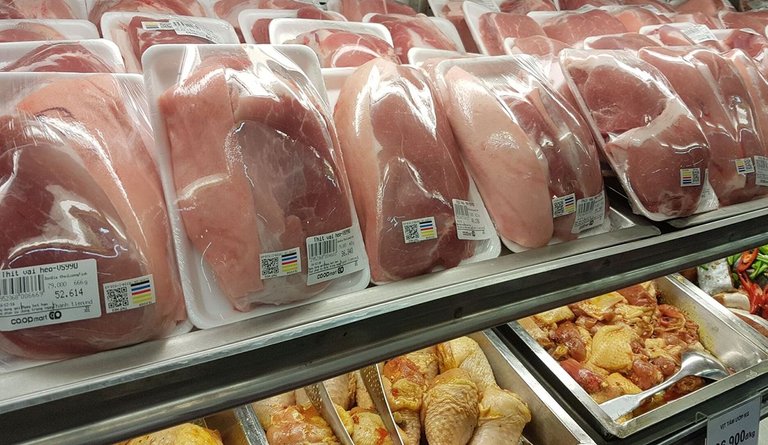
Most of us are not aware where the food that we currently consume everyday really come from, yes we buy from shops and supermarkets but who has information about what happens before that. Who can come up with the data of the processes that our food undergoes from the time it leaves the farm up to the time it reaches the table. Even the institutions that plays an oversight on the processes such as governmental health departments and their associates in most cases are not capable of following up on all food processes given that the processes are too numerous, involving too many players and in often cases over long distances apart.
Recent studies have shown that in the developing world, 1 in every 10 people get ill each year from food-borne diseases and also lack of safe food processes result in the death of 400 000 people, mostly children. Cases of defective foods including baby foods being recalled by manufacturers after reaching the supermarkets shelves are on the rise even in the first world. In the US common overuse of animal has caused the emergence of antibiotic-resistant infections which costs 20 billion dollars in healthcare costs. Experts estimate that by 2050 antimicrobial resistance will cause low income, developing countries to lose more than 5% of their GDP and further push up to 28 million people into poverty.
TE-FOOD is a farm-to-table traceability solution, covering all logistics and food quality activities and data management of the supply chain. It provides cost effective software and identification tools to make livestock and fresh food supply information transparent. Their aim is to democratize the access to food related information as a common property taking the delegated duty from institutions and making the blockchain the ‘’Authority’’ as it is fool-proof to manipulation through its open, distributed ledger.
The token payment solution will be implemented on a public network using TFOOD, an ERC20 token. Transactional and food related information will be stored on a private blockchain, and will be driven by an internal technical token: the transaction token. This will minimise the effect of food related epidemics and food frauds in both developed and emerging economies all around the world. TE — FOOD aims to incentivise conscious consumer behaviour thereby empowering the consumers and also helping small farms and producers to be more competitive.
TE — FOOD is already operational
TE — FOOD is not just bringing an untested idea that they think will revolutionise the food chain without tangible evidence, as a test case, TE-FOOD has been used in Vietnamese Ho Chi Minh City region since 2016 to trace pigs, pork, poultry and eggs through the whole supply chain from farm to retail. The system tracks 12.000 pigs, 200,000 chickens, 2.5 million eggs each day, serving 30 million people.
The government of Vietnam and TE — FOOD opted for a mobile app based approach to help companies adapting to the system. They planned the localization of the system, and the necessary enforcement checkpoints. A pilot project of the system started in Q3, 2016 with a roll-out at the end of the same year. More than 6,000 companies in South-Vietnam were trained within that period to use the system. Preparations to expand traceability to chicken and eggs started in Q1, 2017. During June 2017, training of companies in the chicken/egg supply chain started. From September 2017, 250,000 chickens and 2 million eggs are tracked each day.
The system has been a huge success in Vietnam as it brought sanity to the food industry supply chain that most customers were not privy to. TE — FOOD is now planning to take the system global, and if they succeed they will bring much needed sanity to the worldwide food supply chain amid allegations that are laid almost every day that most producers supply food that may have been compromised in terms of quality and food that may have negative health effects on the end users.
How TE — Food works
- Identification tools
TE — Food makes use of cost effective 1D/2D and RFID identification tools for each step of the supply chain. These tools come in the form of:
a) Security seals (1D/2D barcodes)
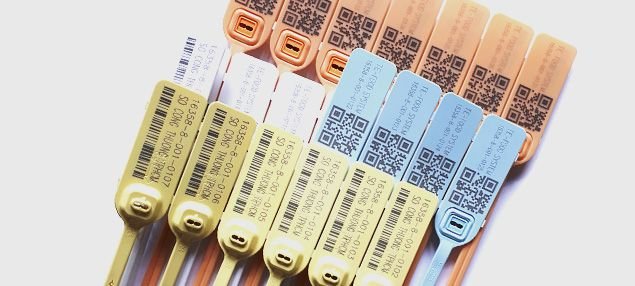
These incorporate sunshine and water resistant printing to avoid being worn out too quickly as well as non-toxic material to keep the food safe from chemical contamination. The security seals are used to identify livestock, transport trucks, and fresh food packages.
b) RFID tags
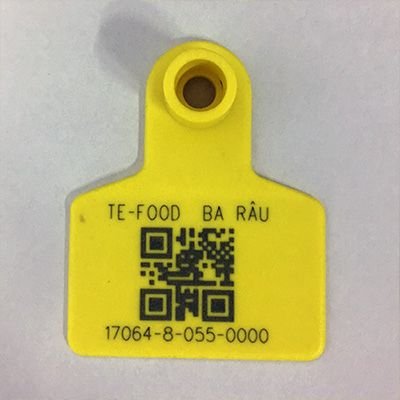
These are high quality ear tags mainly used on animals for easy identification, movement as well as storing pertinent data.
c) Label stickers (2D barcodes)
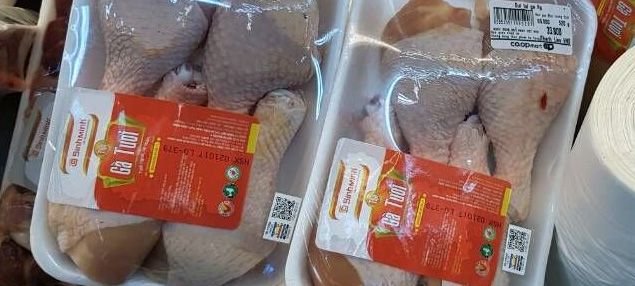
These are QR codes combined with easily recognizable colour codes (colorgram) for visual validity check. Label stickers are applied to individual food packages in retail.
d) Printed paper bags (2D barcodes)
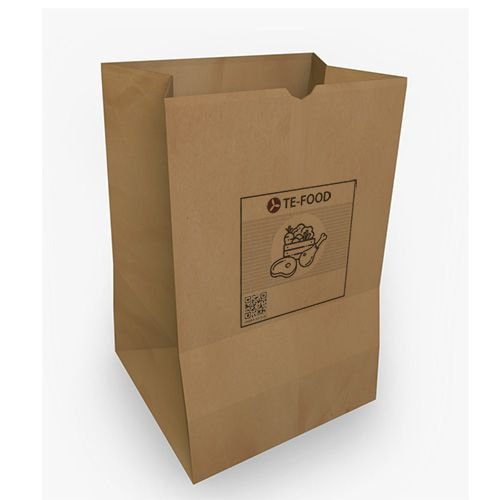
Most people are quite familiar with paper and plastic bags used in everyday shopping. What makes these ones unique is that they are printed with TE-FOOD compatible QR code.
e) Digital Signage — For further customer convenience, TE-FOOD provides solutions for retailers to display traceability information. A self-service terminal solution helps consumers without mobile phone to read the QR codes on the product and display food history. This brings convenience closer to the customer’s grasp as even technology is taken out of the picture as all the customer needs is their eyes to read.
- Tools for the supply chain
TE-Food has developed a multilingual mobile admin app optimized for low-end phones. The mobile app uses the phone’s camera to read 1D/2D barcodes to identify items (livestock, transport, food product) as part of processes. This makes it easy to track food from the farm to the table as the mobile app it is role based, each role (e.g. farm, slaughterhouse, etc.) has its own processes, menus, functions. The functions focus on:
a) Logistics transactions — sending and receiving transports
b) Food safety information — providing weight, feeding, vaccination, etc. information
c) Identification tool management — ordering and logistics of identification tools
- Consumer mobile app
TE-Food also provides a free application to check food history while shopping. Therefore, product origin can be easily verified and consumers can easily gain history insight with an easy to use, free public mobile app. Consumers stand to benefit from the following uses:
a) Read and verify QR code
b) Read product history
c) Learn more about the suppliers
d) The mobile app is available for Android and IOS.
- Standard interfaces
TE -Food provides easy connectivity for third-party solutions. This is achieved through the use of the following:
a) Back office system — Makes use of a web based back office system which allows the operator to watch all master and transactional data generated in the system. TE-FOOD is open towards companies with third-party logistics or traceability solutions. Traceability information can be sent to the system through standard interfaces.
b) Reporting tools — Supply chain participants are afforded access to daily, weekly, monthly reports about their activities, thereby keeping data on the fingertips of those who might need it for quick decision making.
TE-FOOD provides two implementation models, private or institutional, depending on the organization and scope of the implementation. Based on the experience they have gained over the years, TE — FOOD provide a complete, detailed roadmap for the traceability implementation, which describes technological, legislative, communicational, and inspectorial aspects of the implementation.
a) Private implementation - Private companies of the supply chain (e.g. food producers, retail companies), food organizations implement traceability for their activities. They require to provide data to the system from their suppliers by using it or interfacing to it.
b) Institutional implementation - Authorities or public organizations implement traceability for a group of companies. The scope can be geographical, or industry category related (e.g. pig, fish). Participation can be voluntary or mandatory and implementation is possible in PPP model.
Role based processes
As we all know in the food supply chain, each role has different processes and in most processes, one party provides information, and the other party verifies that information. for clarity purposes here is an illustration:
When animal veterinaries check a transporter, information provided by the sender involving the food or animal is verified (e.g. the Farm).
Farms acquire identification apparatus, activate them after applying them to the tracked item, add food safety information to them, and transport the items.
Agents will accept and send transportation when they purchase/sell the tracked items.
Slaughterhouses verify the transported item’s data, accept transportation, create tracked items after the slaughtering process, send transporttation.
Wholesalers verify the transported items, receive transportation, create new tracked items after the cutting/repackaging process, send transportation
Food producers verify transported items, receive transportation, repackage and apply new identification materials to them, send transportation.
Retailers verify transported items, receive transportation, repackage and apply new identification apparatus to them.
Veterinaries can check the fresh food more times and verify the data the previous participant sent, and they decide to allow or disallow the item to go to the next step.
Authorities representatives can check transportation, identification materials, and their connected data at any time.
TFOOD Utility Token
This is the token that will make it possible for transactions to be processed on the TE-FOOD platform. The token will be used to facilitate various transactions such as:
a) To use TE-FOOD’s blockchain traceability ledger, supply chain members will need to pay for transactions using the TFOOD utility token.
b) The token will also be used to exchange value in the sense that, information provided by certain type of supply chain companies tend to be quite valuable to other members of the supply chain. (As an illustration: Information such as the treatment history and the type of treatment administered to an animal, such as a calf, is important for those that will purchase the animal in the future. Failure to have such data on hand may end up with the same drug or vaccine being administered numerous times. This may result in the overuse of antibiotic, but if they acquire this information beforehand from the previous owner , redundant activities can be avoided, thus saving money. Rightfully the information holder i.e the calf farm should also earn income from the information they collect during the period the calf will be in their possession.)
c) Consumers also get to earn TFOOD tokens as an incentive for using the TE-FOOD consumer mobile app in-store, by reading the QR code and viewing the food historical information, thereby acting as authority in quality control and also in return the system incentivises them for their conscious consumer behaviour.
d) Consumers can also use the TFOOD tokens to request for food analysis services. All they are required to do in this process is to package a part of the food product and send it to TE-FOOD labs , and they get the results of the food analysis in electronic format which is fast and easy to use.
e) Token holders can spare their rime to rate supply chain companies with which they are in transactional connection with, so that the system can maintain a supply chain company scoring system.
Token supply
Total token supply is 1 Billion token which is a relatively small supply given the potential TE-FOOD has to go international and to be adopted for use in our day to day life.
· Total public token pool: 500 million tokens will be meant for the public token circulation (400 million will be offered in the public sale, 100 million will be offered to marketing as well as proof-of-care, advisors, cafeteria pool).
· General reserve: All remaining 500 million TFOODs will be held in a General reserve.
· As the number of TE-FOOD customers grow, they will require more transactions, thus, more tokens.
· At the same time, certain participants of the ecosystem will be staking tokens, and some wallets usually get lost or forgotten, which will limit the supply.
To avert some of the challenges illustrated above TE-FOOD reserves the right to release tokens to the market from the General reserve beyond the 500 million limit. However, the released excess amount will be justified by the need for the tokens in the circulation. Finally, when TE-FOOD grows further, all 1 billion tokens will be on the market.
The TFOOD token Economy
Buying traceability transactions
- Supply chain members choose the number of transactions they want to buy in the TE-FOOD B2B app. To cover the cost of the chosen number of transactions, they can buy TFOODs for fiat money or Ethereum on the Exchange, and store it in their TFOOD wallet. The smart contract automatically deducts 10% of the TFOOD tokens, and 9% is exchanged to transactions on a fixed exchange rate for supply chain Reimbursement transfers 1% to the TE-FOOD Consumer Rewards wallet, exchanges the tokens to transactions on a fixed exchange rate, the remaining tokens are distributed to the solution provider. On the private blockchain, TE-FOOD deposits the purchased transactions to the supply chain participant’s Transaction wallet.
Reimbursements
Each time a supply chain member buys transactions, 9% is exchanged to transactions on a fixed exchange rate for supply chain reimbursement. Daily once, an algorithm selects the supply chain companies to share the tokens. On the private blockchain, TE-FOOD automatically deposits the transactions to the selected supply chain members’ transaction wallet.
Paying for value added information
Supply chain companies (value providers) can set a price / item on specific food related data they provide. If other supply chain companies (the buyers of the value providers) want to obtain those information, a smart contract deducts the total price (value added information price multiplied by the actual number of the received tracked goods) from their TFOOD wallet, transfers the TFOODs to the value provider’s TFOOD wallet.
Rewarding conscious consumers
Consumers check the TE-FOOD tracked food product’s QR code using the B2C mobile app. A smart contract automatically transfers a pre-specified amount of TFOOD tokens from the TE-FOOD Consumer Reward wallet to the Consumer’s TFOOD wallet as reward.
Selling tokens
Supply chain participants and consumers can sell their excess tokens on the Exchange for a desired rate. It creates a selling offer on the Market. Buyers can buy tokens on a desired rate, when they match, the deal is written in a smart contract. The seller’s TFOODs are transferred to the buyer’s TFOOD wallet.
The future of TE-FOOD
TE-FOOD is not planning to end on the token sale but they have a very bright vision of the future. Some of the milestones on their roadmap include:
Food safety sensor tools
TE-FOOD plan to develop a special hardware product, which can be built in transportation vehicles and transportation boxes to measure environmental parameters such as temperature, humidity, time interval, geolocation and log them directly to the blockchain, and build an analyser layer to send alerts when pre-set conditions are violated. This tool provides proof if the food is kept in appropriate conditions during transportation. This will be a welcome development in the fresh food industry as environmental conditions of transportation play a crucial role on the quality of food that reaches the end consumer. According to TE-FOOD the prototype this product is already available.
- Marketplace
In their future plans TE-FOOD is plotting to introduce a virtual livestock and fresh food marketplace which will enable the easy connection of buyers and sellers, wizard based contracting with automated conditioning such as quality or transportational conditions and also the marketplace will offer escrow based payment systems. This will broaden the possibility for companies as issues such as pricing, inventory and contractual conditions will be addressed.
- Animal Facial Recognition
Another exciting development which TE-FOOD is still perfecting is the use of good cameras to develop a facial recognition system making use of recent radical developments that have taken place in the artificial intelligence industry. Plans are in place to work with Meat and Livestock Australia (MLA) which is a producer-owned company providing marketing and research and development services to over 4, 9500 cattle, sheep and goat producer members and the broader industry.
Token Sale
The TFOOD public sale will start on 22 February at 10:00 GMT and according to the TE-FOOD website, only 5 million USD worth of tokens is all the public will have access to purchase as 14 million USD has already been raised during the private sale. We are headed into exciting times with this token !!!!
